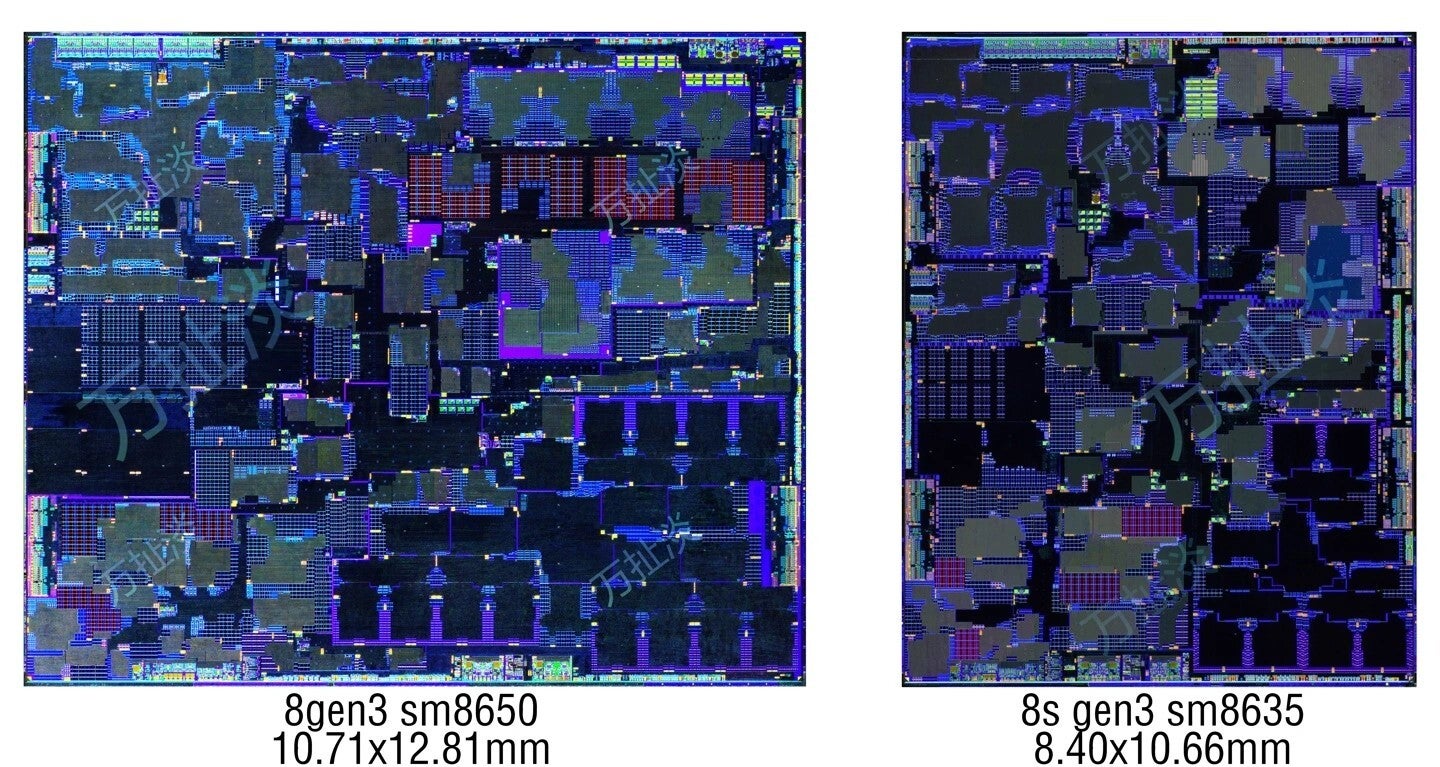Recently, this king of the mobile tech jungle got a spin-off version: the AI-centric Snapdragon 8s Gen 3, which was released less than a month ago.
Now, Gizmochina‘s report is asking the real questions: “Does the ‘s’ in the Snapdragon 8s Gen 3 mean ‘small’?”
That’s because, as it turns out, the 8s Gen 3 is 35% smaller than the 8 Gen 3.
What’s a SoC?
SoC, or System-on-Chip, combines all or most components of a computer or other electronic system onto a single chip. It includes a central processing unit (CPU), memory interfaces (for RAM, ROM), input/output devices interface, and often other features such as a graphics processing unit (GPU), a communications module (e.g., Wi-Fi, Bluetooth), and more.
Is it that small?
Apart from being small, the Snapdragon 8s Gen 3 is less expensive than its bigger, non-‘s’ sibling, catering to those seeking a balance between performance and cost.
Qualcomm’s latest SoC, as showcased in ITHome‘s latest findings, is far more compact than its standard counterpart, measuring 8.40×10.66mm. This represents a significant 34.73% reduction in size compared to the Snapdragon 8 Gen 3‘s larger 10.71×12.81mm dimensions.

Image credit – ITHome
Of course, being more budget-friendly and small, the 8s Gen 3 introduces compromises, as it features a scaled-down cache configuration. Notably, the top-tier X4 core’s L2 cache is cut from 2MB to 1MB, with similar reductions seen across its L2, L3, and SLC caches.
While the Snapdragon 8 Gen 3 leverages TSMC’s 4nm manufacturing process and boasts a CPU setup including a 3.3GHz X4 core among others, coupled with the Adreno 750 GPU, the Snapdragon 8s Gen 3 maintains the 4nm process but opts for a slightly different architecture. It has a 3GHz X4 core, four 2.8GHz A720 cores, three 2GHz A520 cores, and incorporates the Adreno 735 GPU, which lacks certain advanced graphics capabilities like global illumination effects.The Snapdragon 8s Gen 3 further diverges in terms of memory support, peaking at 4200MHz LPDDR5X versus the 4800MHz supported by the 8 Gen 3. It also offers more limited video capabilities, supporting 4K HDR recording over the 8 Gen 3’s 8K HDR, and comes with an older X70 baseband which impacts theoretical network speeds compared to the 8 Gen 3’s X75.
